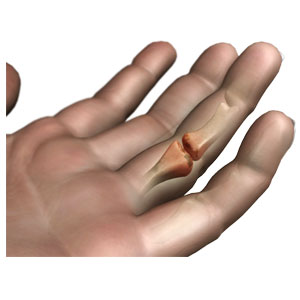Anatomy of the Hand
The hands are made up of 27 bones, which are grouped into carpals, metacarpals and phalanges. Each bone is separated by the articular cartilage, which helps with the smooth gliding movement of the fingers.
What Is Arthritis Of The Hand And Fingers?
Arthritis develops when articular cartilage wears-out. This can result in pain, stiffness, and inflammation in the joints. It can affect any joint in the body, but the most commonly affected joints are the small joints of the fingers.

Finger joints are essential for many activities, and arthritis in this area can cause significant joint damage and deformity.
Symptoms Of Arthritis Of The Hand
The symptoms of arthritis of the hand usually include swelling, pain, stiffness, and malformation, all of which interfere with the use of the hand.
Diagnosis Of Arthritis Of The Hand
Your doctor can usually make the diagnosis of arthritis by examining the hand. X-rays of the hand may be ordered to determine the severity of the disease, and identify any bone spurs or calcium deposits.
Treatment For Arthritis Of The Hand
Non-surgical treatment methods for relieving pain in an arthritic joint include activity modification, anti-inflammatory medications, use of splints, or steroid injections. Surgery is usually considered when non-surgical treatment fails to give relief. There are different surgical procedures that can be used:
Artificial Finger Joint Replacement
Artificial finger joint replacement is a surgical procedure that involves the removal of an arthritic or damaged finger joint and replacement with an artificial prosthesis.
Arthrodesis
A fusion, also called an arthrodesis, involves the removal of the joints and fusing the bones of the joint together using metal wires or screws. Even though this surgery eliminates all motion at the joint, the resulting fusion is very durable.
This surgery is usually indicated when the joints are severely damaged, when there is limited mobility, damage to the surrounding ligaments and tendons, failed previous arthroplasty, and when heavy manual use is expected.
Your surgeon will discuss the options and help you decide which type of surgery is the most appropriate for you.
